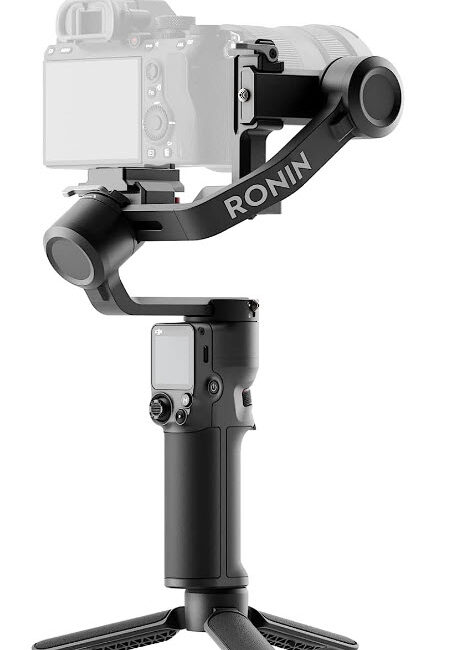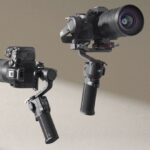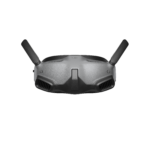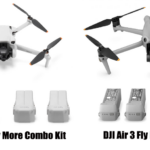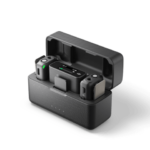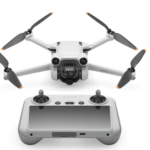In the Blue corner we have the Zhiyun Crane M3S, designed for smaller interchangeable lens camera and mobile phones, and now, in the red corner, we have the DJI RS3 Mini, also designed for smaller interchangeable lens cameras – but can also take some of the larger full frame cameras as long as they weigh less than around 2KG with the lens attached that is.
The pricing is pretty close though at around AUD$530, so what are the main features of the RS3 Mini and where does it sit against the Zhiyun offering in comparison?
Let’s accept for a moment what all gimbals do; they allow you to mount a camera (or smartphone or action camera), and using the 3 motor driven axes available, smoothly move the camera around X, Y and Z space (pitch, roll and yaw) without any jerkiness. Virtually any type of shot where a camera has to move to follow the action, or keep a subject in frame as you are moving, is made so much better with the use of a gimbal.
With the better gimbals, and when they are connected either by USB-C cable or Bluetooth, appropriately featured cameras can be operated by controls on the gimbal to change such things as focus, shutter speed, iris (aperture) ISO and so on.
Most of the “brand” gimbals like those from DJI, Zhiyun and Feiyutech also have smartphone-based apps letting you control the movement of the gimbal remotely.
Differences
So basically, what distinguishes one gimbal from another comes down to the feature set and the build. The latter is especially important as a badly made gimbal or one with inferior materials will not give the results you expect.
I have looked at many gimbals that are on the market over the years, and although many look good in their promo videos, in the real world they are crap. So, don’t waste your money. If you want professional results, buy a decently built gimbal. You pay for what you get.
Simple.
Balancing
With any gimbal, it is necessary to balance your camera in order for the axes motors to work correctly. How easy this is, is a good measure of a gimbal. The RS3 Mini was very easy to balance in comparison to some I have used, but I admit I missed the geared thumb screw for fine tuning the RS3 Mini’s bigger brother has as, similar to the Zhiyun, you need to manually slide the arms after unlocking them to get just the right position. When tiny increments are needed, it can become tedious and frustrating, especially the first time you attempt it.
I have balanced so many gimbals over the years I now have it down pat and can usually completely balance a new gimbal / camera combo in about 5 minutes or so.
One good feature of later design gimbals such as the RS3 Mini is the use of a mounting plate that slides into the main arm of the gimbal. This means that once all the balancing has been done for a specific camera, even after turning the gimbal off, it will retain those setting as you merely have to slide the camera with its mounting plate into place.
The DJI engineers have seen fit to use a Arca-Swiss mounting plate for the RS3 Mini which means you can seamlessly switch the camera from the gimbal to a suitable tripod supporting Arca-Swiss mounting plates and vice versa.
If you an inhabitant of the TikTok world, you’ll love the idea the RS3 Mini supports vertical video too. There is a drawback though; on all the cameras I tried, the setup means I could not open the LCD monitor which may be limiting for some, especially those who like doing selfie videos.
Software Control
Like the Zhiyun and most other decent models, the RS3 Mini has a small LCD screen and joystick affair for setting up controls, functions and so on, such as the stabilisation mode (Pan Follow, Pan Follow Tilt and First Person View). You can also use this panel to customise some controls like the front control wheel.
Finally, there are setup options to test and fine tune the balance.
Smartphone App
Some might see it as a drawback of the RS3 Mini (and all DJI products for that matter), but before you can use the unit fully, you need to register it with the company via the DJI smartphone app. You can skip this operationt 5 times before this becomes absolutely necessary, but trust me, unless you have 20/20 eyesight, you might miss that on screen message it is so tiny!
As mentioned, this app can also be used ton remotely control the RS3 Mini and is in effect, the same app used for all DJI non-drone products as far as I can tell.
One area the Zhiyun offering does beat the DJI model is in the area of lighting. Later Zhiyun models have an integrated LED light allowing different colours via overlay screens whereas DJI units still need an added accessory to achieve this.
By the way the internal battery is charged via USB-C and is said to be good for 10 hours in the RS3 Mini.
Summary
All in all, the DJI Mini 3 and Zhiyun Crane M3S are very much alike. Each has advantages over the other in certain areas. What it may come down to then in your case, is whether the gimbal supports your camera via the Bluetooth or USB-0C connectivity.
The lists of compatible models are updated on a regular basis as the SDKs (software development kits) are made available from the camera manufacturers to developers as new camera models are released. Because of this it is best to check the website of each gimbal manufacturer for your specific camera.
Final Question
The final question then is do you need a gimbal? A bit depends on the type of shooting you do. If it is all fixed tripod mount stuff and mainly still shots, probably not. But if you regularly shoot video, a gimbal gives you so much more flexibility in the types of shots you can select.
These days, I would not go without one.
You can get more info on the DJI RS3 Mini at https://d1store.com.au/products/dji-rs3-mini

